It now takes just a little over 2 hours 30 minutes to make the 506 km journey between Madrid and Barcelona by train. Serving two of Spain’s largest cities, this is the busiest route on the network, used by locals, tourists and businesses travellers. Given its popularity, the route is extremely well served in terms of frequency, reliability and affordability. If you’re considering making the trip by train, we’ve analysed the best options for you here.

Atocha’s tropical garden is a relaxing escape from the bustle of Madrid (Photo: Mindaugas Petrutis via Unsplash)
With the highly-anticipated launch of two new low-cost train services, Ouigo and Avlo, in summer 2021, there are now three direct high-speed intercity links for travellers to choose from. You could also take a regional express train but, with the new low-cost alternatives, this more inconvenient option has lost its allure. All three high-speed services depart from the magnificent Madrid Atocha, the city’s largest train station, and terminate at Barcelona Sants station. From here, it’s just a few metro stops to the Catalonian capital’s historic centre.
Option One: High-speed, low-cost with Ouigo
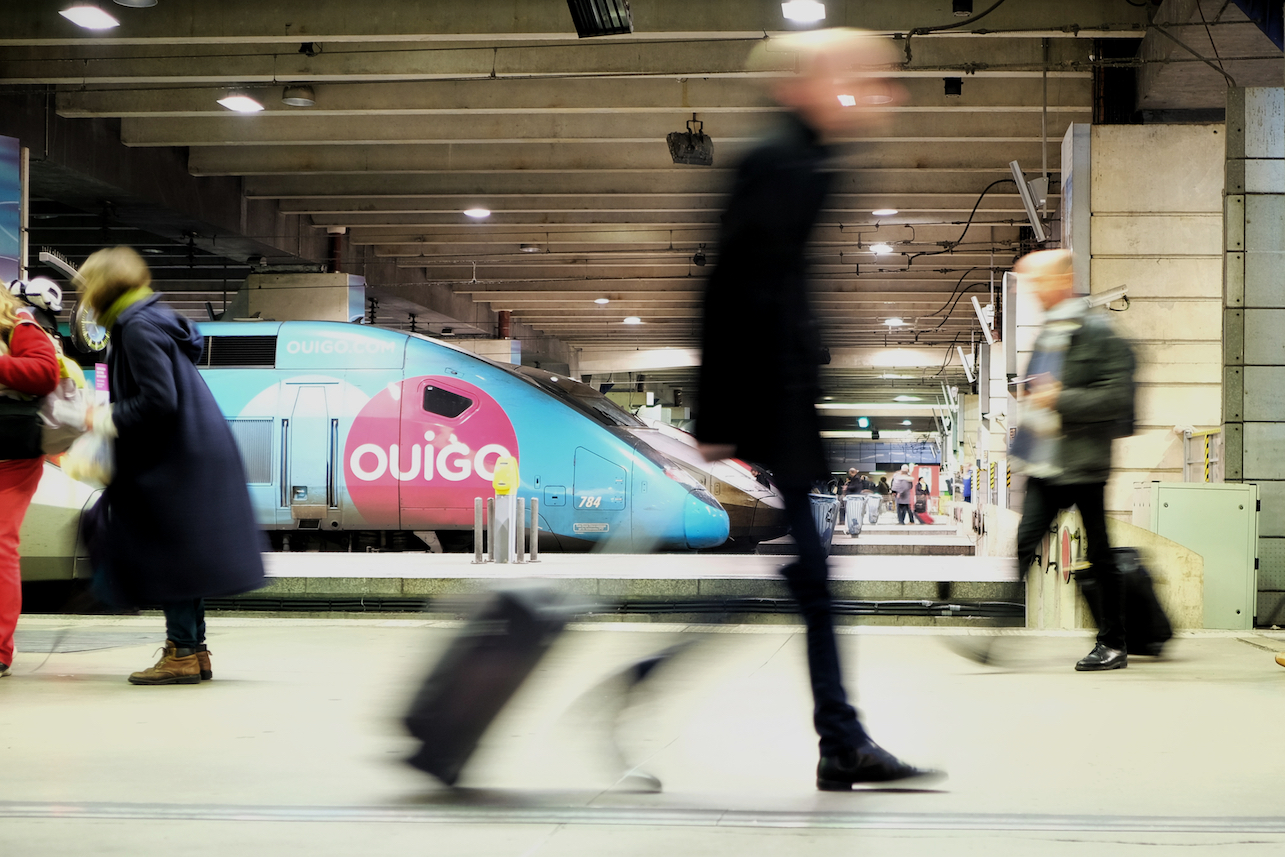
Ouigo, already a popular brand in France, is changing the game in Spain (Photo: Olivier Prt via Flickr: CC BY-NC 2.0)
Ouigo is a brand new budget bullet train, owned by French national train operator SNCF. Already popular in France, the brand launches its first service in Spain in May 2021, initially offering ten daily trains between Madrid and Barcelona. The high-speed low-cost service takes 2 hours 30 minutes. Services stopping at Zaragoza and Tarragona take just 15 minutes longer.
Like most budget airlines, first class has been stripped out for a one-class system. With the ‘standard’ or basic fare, passengers are limited to one cabin bag and a small bag on board. For a fee, you can opt to upgrade to an ‘XL’ ticket, which includes add-ons like extra legroom, seat selection, one additional piece of XL luggage and free access to the premium entertainment service. For another fee, passengers can add a FLEX! ticket which allows unlimited changes to departure time and date. And, unlike other train operators, passengers are allowed to bring up to two pets on board too, albeit for an additional fee.
Onboard the double-decker carriages, amenities aren’t quite as basic as might be expected either. There is free WiFi and power outlets at every seat, and a cafe-bar carriage for snacks, hot drink and light bites.
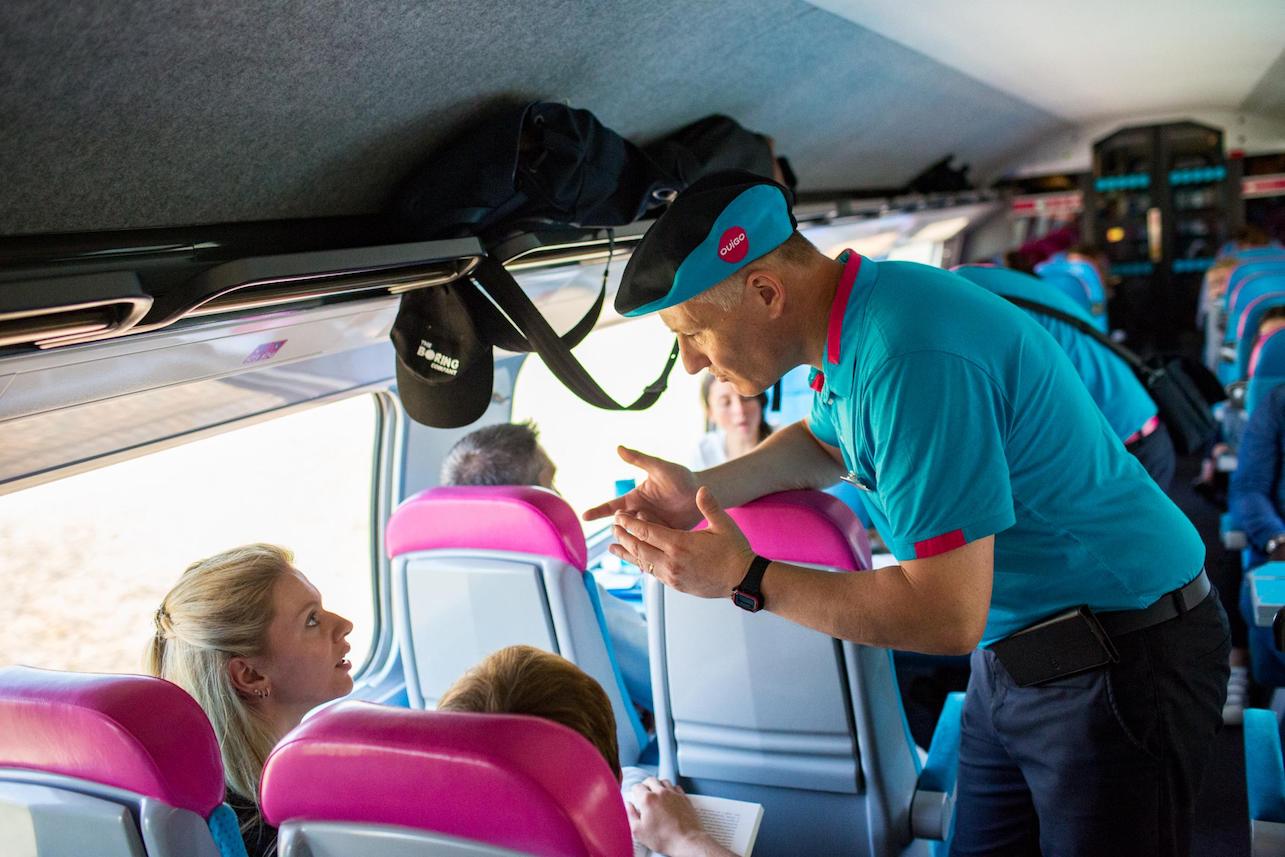
Ouigo’s brightly coloured interiors are well-known in France (Photo: SNCF, Emeric Fohle)
Prices start at €9 for adults and €5 for children, and trains can be booked up to 9 months in advance.
Option Two: High-speed comfort with Renfe AVE
The high-speed AVE train, which stands for Alta Velocidad Espanola (Spanish High-Speed), is Renfe’s flagship intercity rail service. Trains comfortably reach speeds of up to 310km/h, with an average journey time of 2 hours 30 minutes. Until the launch of Avlo and Ouigo, it remains the fastest way to travel between the two cities.
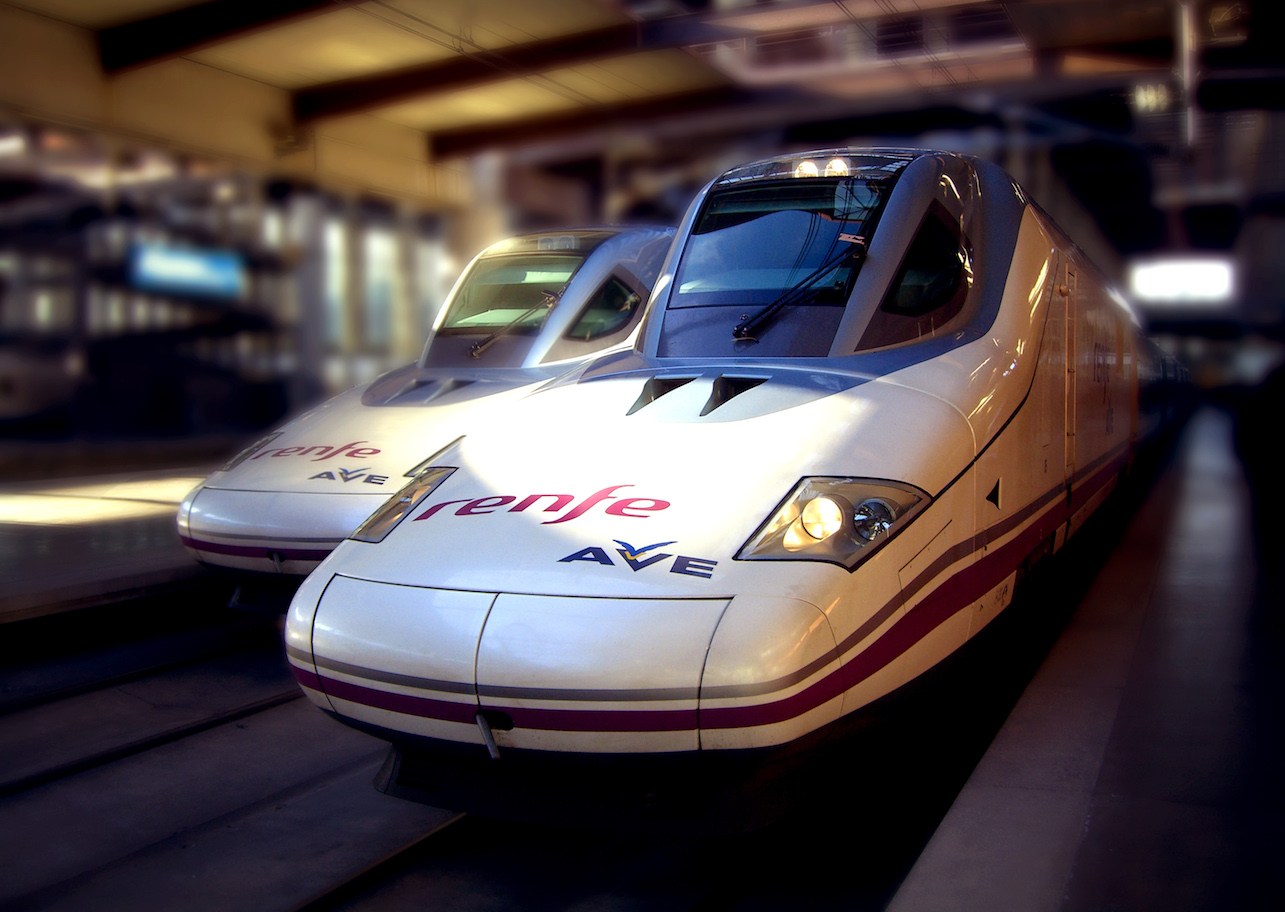
Renfe’s AVE has offered the only high-speed direct train service between the two cities since 2008 (Photo: Mikel Ortega via Flickr: CC BY-SA 2.0)
Passengers can choose from three classes: Turista, Turista Plus and Preferente. Turista is comfortable enough; all carriages are air-conditioned, with in-seat radios, power sockets and good access to WiFi. For passengers who prefer a little extra leg and elbow room, it’s worth upgrading to Turista Plus, which offers Preferente style seating without the added extras. In Preferente class, passengers are treated to spacious leather reclining seats, complimentary snacks, and an a la carte bar and meal seat service. Preferente customers also have access to the Sala Club before departure, an exclusive station lounge with complimentary tea, coffee, snacks, beer and WiFi.
Passengers are also allowed to bring up to three large pieces of luggage on board free of charge. There are large luggage racks at all carriage exits, as well as overhead. On board, all passengers have access to the cafe-bar carriage serving hot and cold drinks, snacks and hot meals, as well as a trolley service. For families travelling with children, some AVE trains offer play areas too.
Prices for the AVE service start at €28 for Turista tickets and €65 for Preferente, if booked well in advance. Tickets purchased closer to the departure date cost upwards of €100. Tickets can usually be purchased up to 60 days in advance, though Renfe will occasionally alter these booking windows. It’s worth keeping in mind that all AVE tickets are eligible for the ‘combinado cercanias’ ticket. This is a five-digit code that entitles customers to a free ticket for a suburban (or FEVE) train within four hours of arrival and departure at both the origin and destination stations.
Option Three: High-speed, low-cost with Renfe Avlo
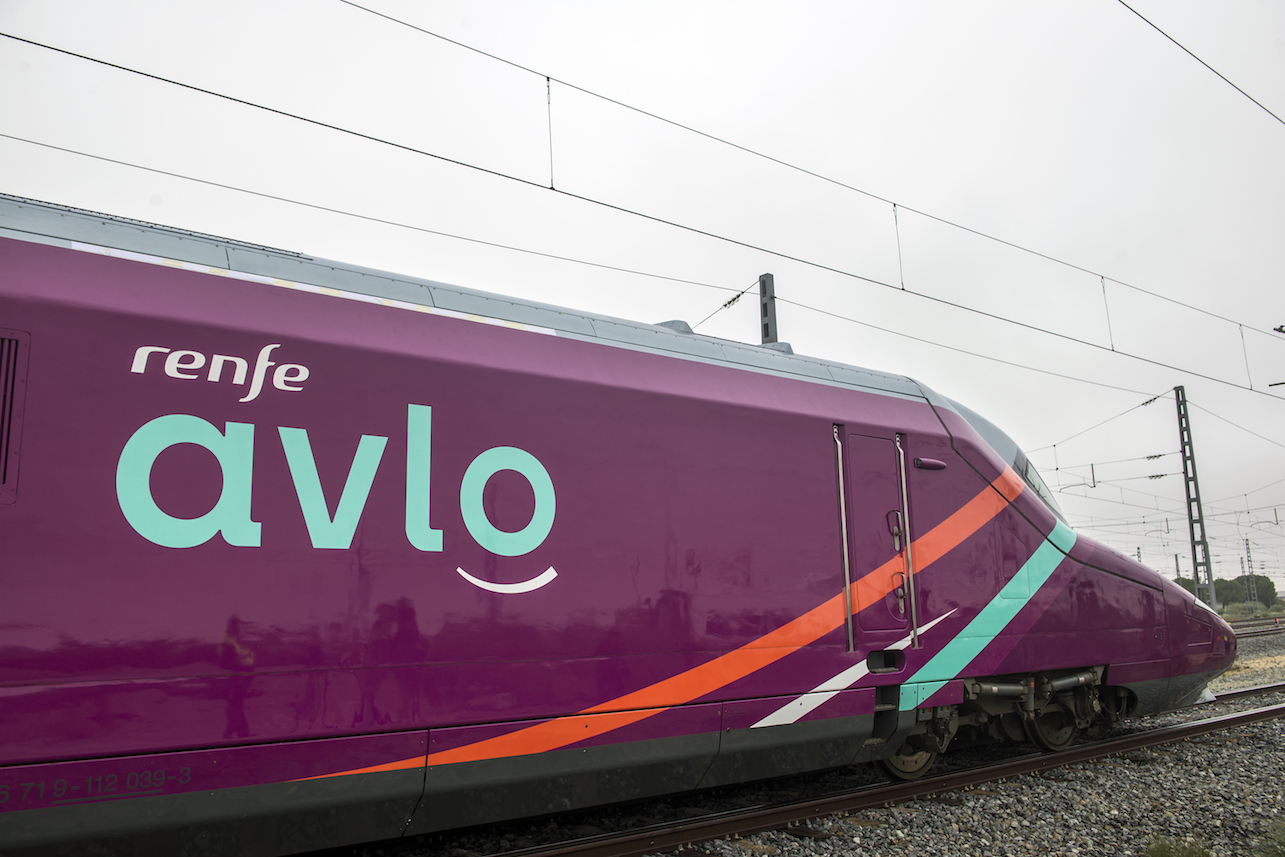
Renfe has announced that the Avlo passenger service will run from June 21 (Photo: Renfe)
Avlo is Renfe’s low-cost, high-speed answer to the French competition. Services were due to launch in 2020 but were delayed due to Covid-19. Services will now roll out from June 2021, with two non-stop services and two services via Zaragoza every day.
Prices start at just €10, with a fixed price ticket of €5 for all children under 14 – an excellent option for families. As with Ouigo, carriages are one-class only, with an option to pay for add-ons. Extra fees and services include include seat selection, additional baggage and ticket changes.
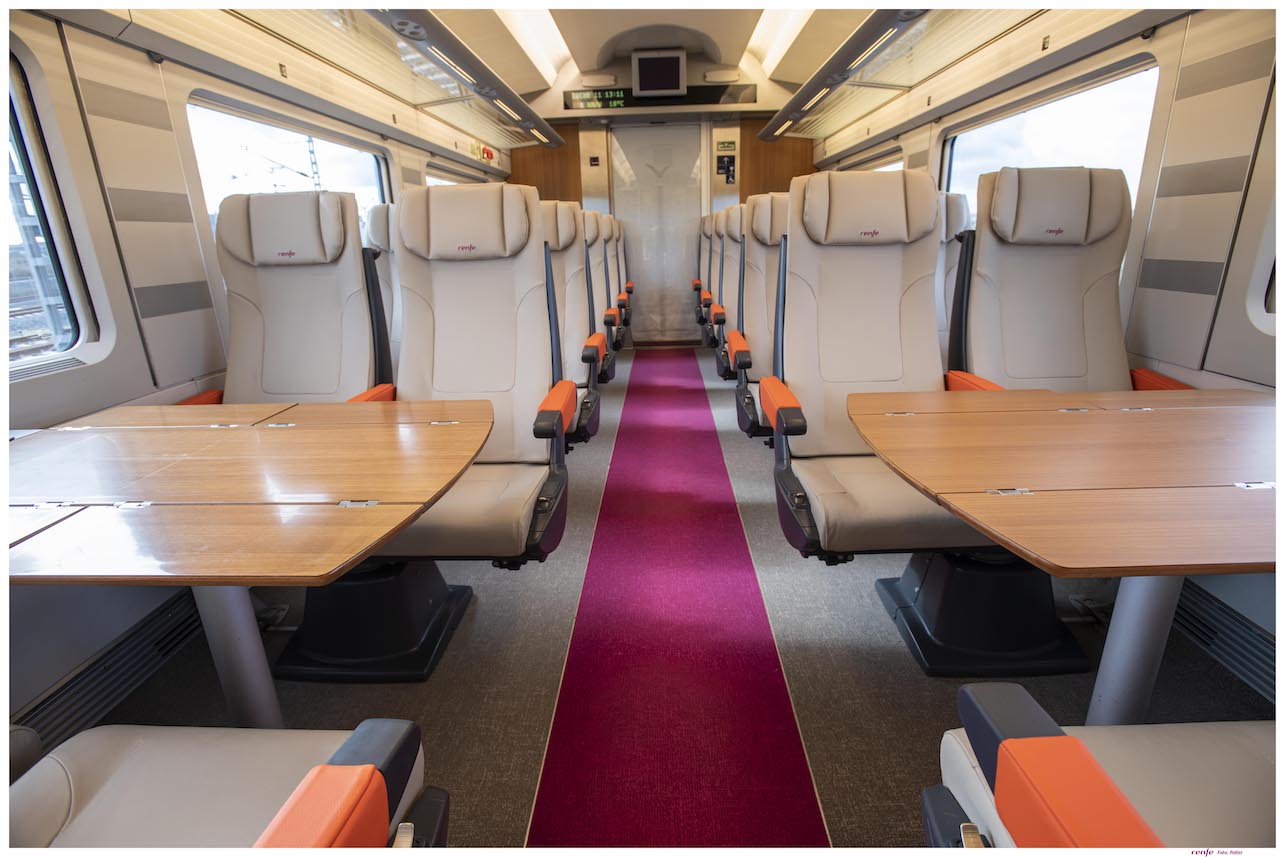
Inside the newly-launched Avlo train service (Photo: Renfe)
Facilities are a no-frills affair. There is no cafe, bar or restaurant on board, though there are vending machines. WiFi is free, with access to exclusive content from PlayRenfe. For families, there are changing facilities in the majority of carriages. All trains are fully adapted for reduced mobility, with entrances to carriages at platform level. Travellers can also request an Atendo, a free support and assistance service for those with reduced mobility, available via the Renfe app.
Option Four: The regional ‘express’ train
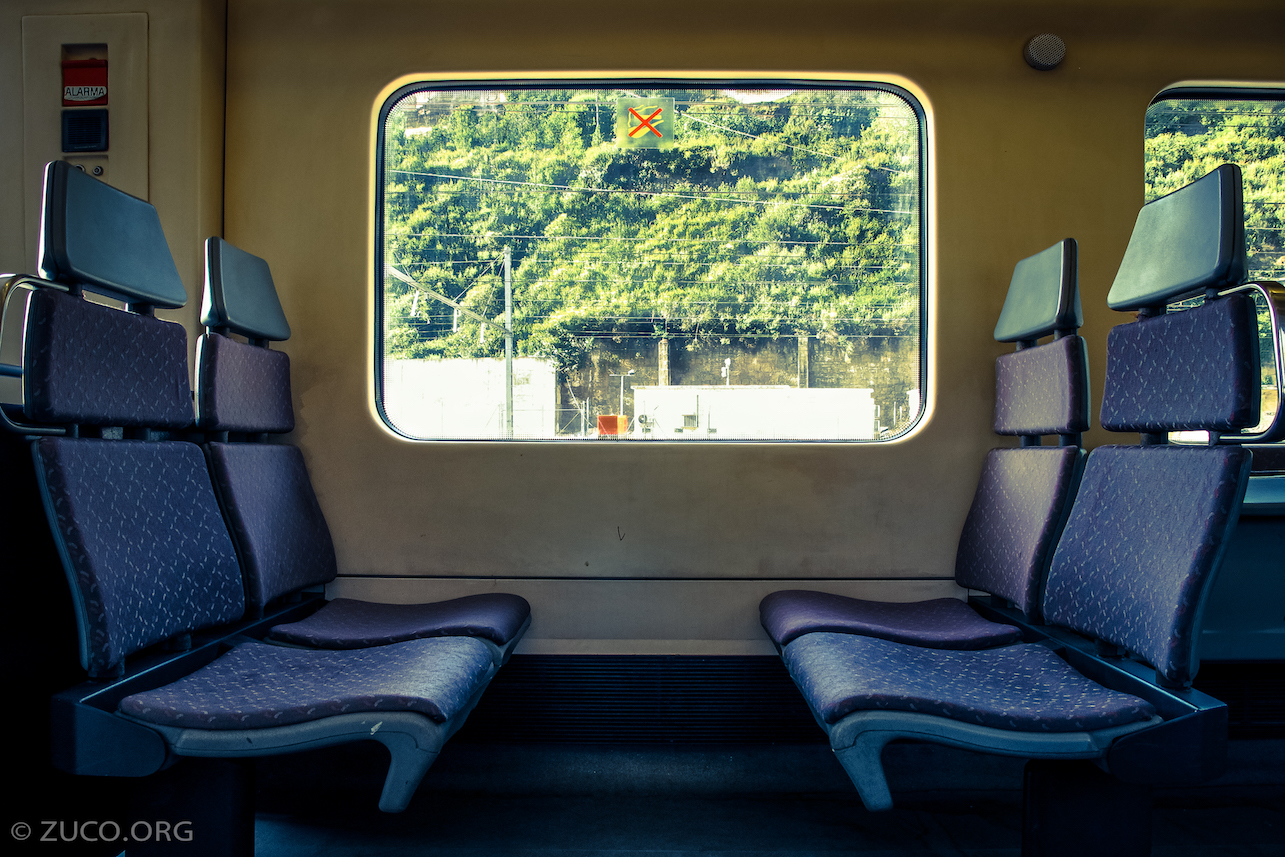
A standard train carriage on the regional express train (Photo: Pietro Zuco via Flickr: CC CC BY-SA 2.0)
There is also a direct regional express train from Madrid to Barcelona, with one service per day at 07:15am. The train departs from Madrid Chamartin, rather than Madrid Atocha. Before the low-cost, high-speed options, the regional train was a popular and more affordable alternative to the more expensive AVE Renfe trains. Now, with cheaper and faster alternatives with Avlo and Ouigo, there’s little reason to opt for this route. The journey time is over 9 hours and 20 minutes, stopping at a dozen stops along the way.
There is only one class available on the regional express (REG EXP. 17050), with prices from €38.10.
Rates and how to book
There are currently at least 23 direct services running daily between Madrid and Barcelona, which will increase with the launch of Avlo and Ouigo services in Summer 2021.
Ticket prices are dynamic in Spain, so it’s worth booking as far in advance as possible. In Spain, all children under 4 travel free, but you will need to pick up a free infant ticket at the Renfe ticket office before boarding. Reservation for all long-distance trains in Spain is mandatory.
We recommend booking tickets through Omio, a leading European train ticket comparison website guaranteed to find the cheapest available rate. The booking process is easy and takes just a couple of minutes, and you don’t even have to create an account either. Book your tickets at Omio.com.
Where to stay in Barcelona on a budget
When it comes to choosing your accommodation, there’s no need to limit yourself to the confines of Sants neighbourhood. Barcelona is highly walkable, with a well-connected metro system covering every corner of the city. And, as you’d expect, there’s plenty of choice when it comes to accommodation, from budget boltholes to luxurious suites. But it’s also a perennially popular city, as beloved for stag-dos as it is romantic mini-breaks, so hotels book up fast. If you’re thinking about making the journey by train, here are three of the best accommodation options with easy access to Barcelona Sants station
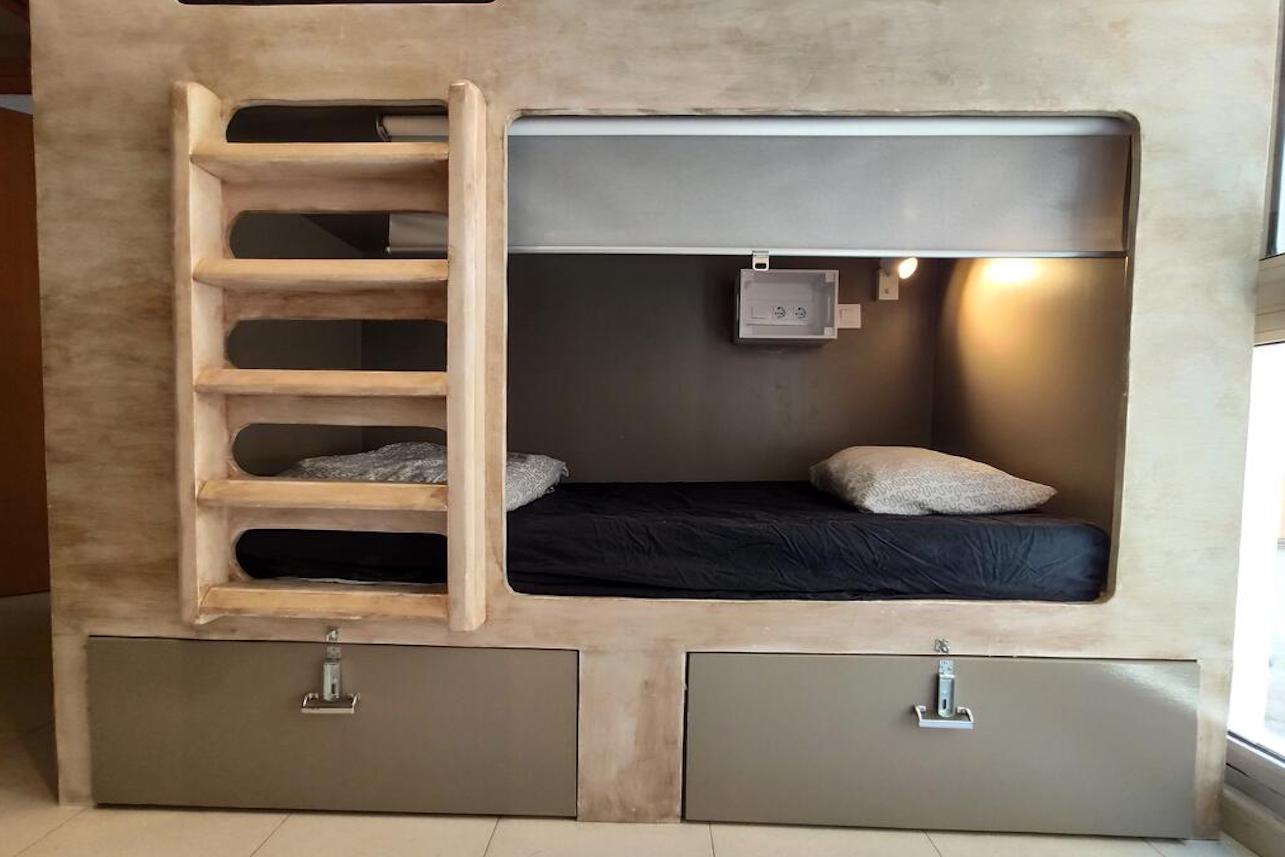
A typical dorm bed at Hostel One Sants (Photo: Hostel One Sants)
If you’re looking for a cheap and cheerful hostel with easy access to the Barcelona Sants station, it’s hard to beat Hostel One Sants. A ten-minute walk from the station, Hostel One is surrounded by cafes, shops and bars. Guests can choose from a range of private, 4-bed and 6-bed dorm rooms, all of which are air-conditioned, with personal lockers and shared bathrooms. Communal areas are spacious and well appointed, featuring a large TV lounge area and an inviting communal terrace. And, it’s just a 20 minute walk to the beach too.
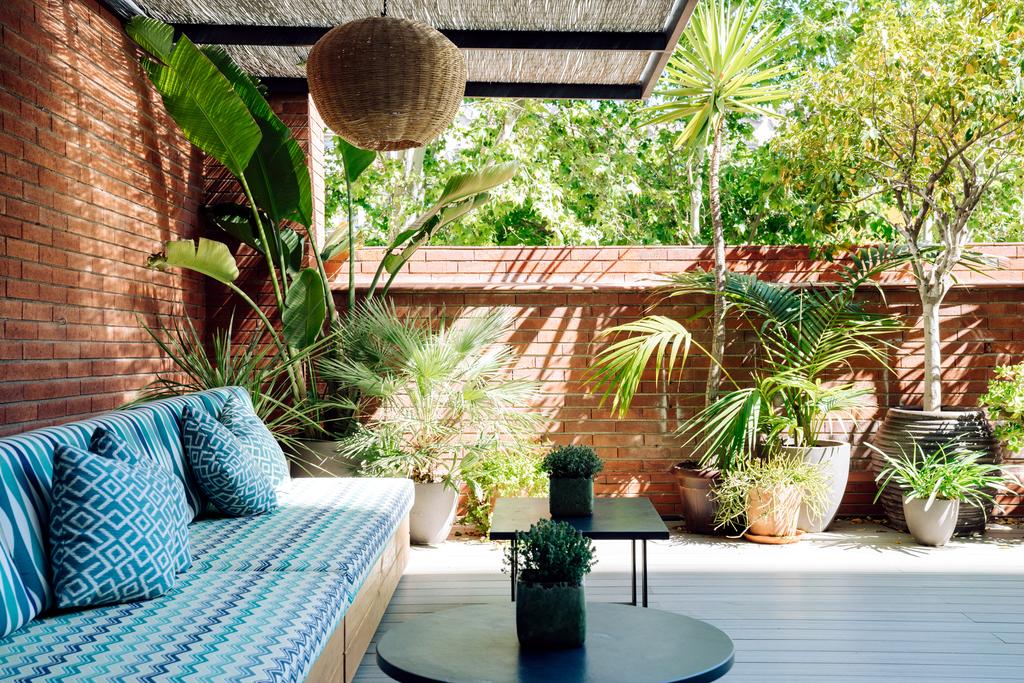
One of the terraces at Chic & Basic Velvet (Photo: Chic&Basic Velvet)
If you prefer to stay in hotels, Chic & Basic Velvet is an excellent option. Affordably priced and just a 10-minute stroll from the station, the hotel offers a range of twin, double and family rooms, all with private bathrooms. Guests can enjoy drinks at the honesty bar, which leads directly onto a large two-story terrace with 50’s style beach huts. Room prices include a generous daily buffet breakfast, and there is an onsite restaurant for dinner too. The 24-hour reception desk offers a concierge service and luggage storage.
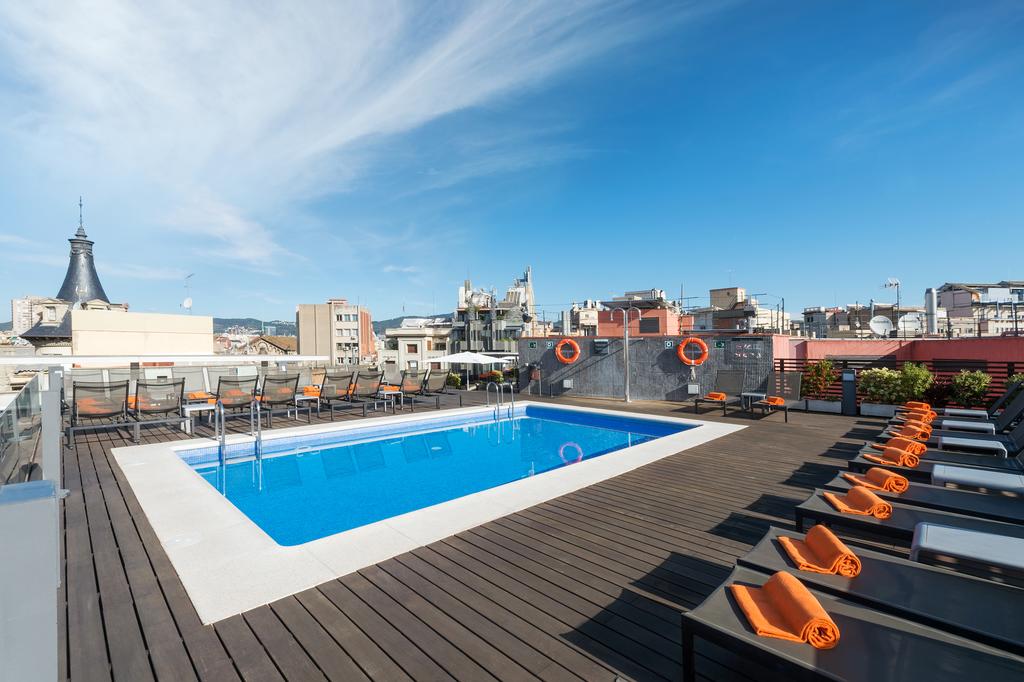
The pool at Hotel Jazz offers views out to the Montjuïc hills (Photo: Hotel Chic & Base)
For a mid-range option, head to Hotel Jazz, a ten-minute direct metro journey from Sants station. The rooftop pool is a blessing in the summer, when temperatures topple into the 30’s. By night, the terrace turns into a bar lounge, where guests can enjoy cocktails and tapas, al fresco. Decor is sleek, monochrome and in keeping with its name. Guests can choose from a range of stylish, but minimal, twin, double and family rooms – with the price rising as the rooms get higher up the building.